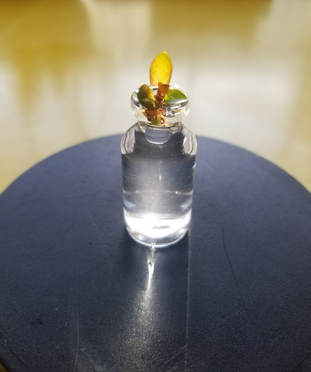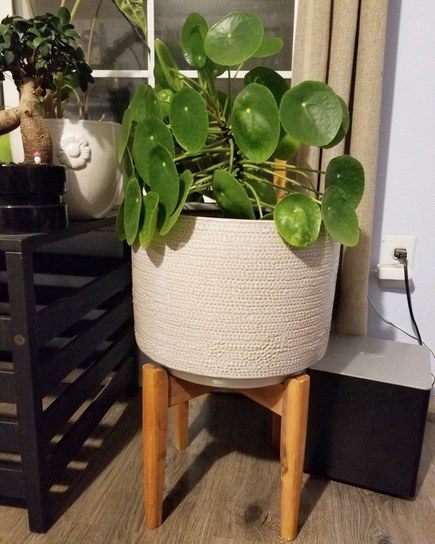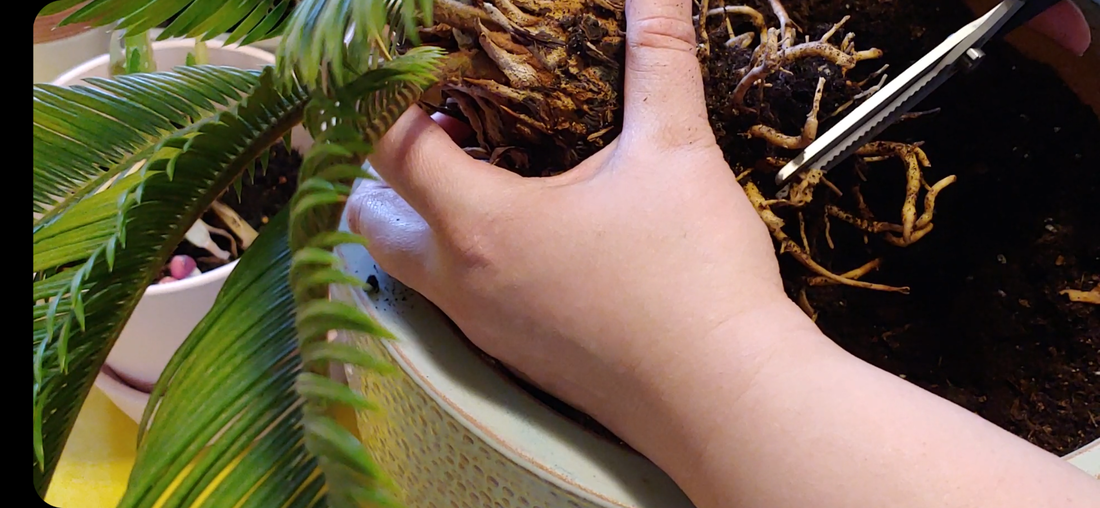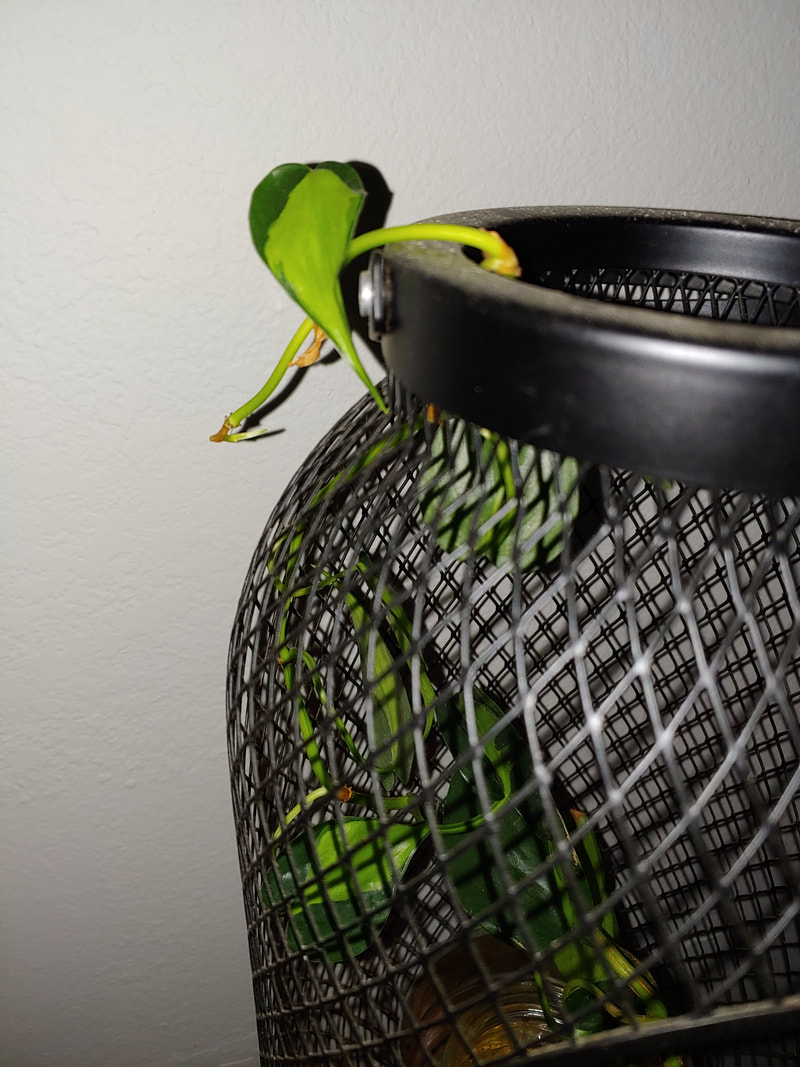Do you love plants? Me too! Welcome to my little website where you will find the types of plants I love and how to care for them.

One of my top favorite plant is the Pilea Pepermoide. The first time I saw them on Instagram I knew I had to find this precious, awkward little "alien plant". What captivates me are the such perfectly shaped spheres that branch out towards you! Ha, okay, too much. Nonetheless, I only knew that I had to have one. I searched and searched, comparing prices in 2017; the better priced pileas sold in England for less than $15! In the U.S. the cheapest I found was $80...I even offered to pick it up in Portland for a cheaper price but the seller would not lower price.
So in October 2017, I finally ordered one online from a nursery in Canada at a cheaper price of $60...I know! When it arrived I was a wee bit scared because it was wilted and two leaves had broken off. After chatting with the seller, I was guaranteed that she would sprout right back up. And, she sure did, after several months, my pilea started sprouting babies (see below) and here is one of the pilea babies on the right. Aren't they adorable?!
I have about 15 babies that I don't know what to do!! Help! Well, I am going to send one to my sister in Texas, cross your fingers that it will arrive well!
Then I gifted one to my mother for her bday, which of course she LOVES! Then today, I gifted one to my coworker/friend and she's in love...she just became a Plant Lady herself! Ha!
The other babies, I have posted on my facebook and will post on craigslist to sell...wish me luck!
Update May 2018 are being sold online for about $15+ with shipping or more for shipping included for a 2". Another person commented that Seattle has them as well. I have been selling babies in Yakima county and those who see them, fall deeply in love as well.
So in October 2017, I finally ordered one online from a nursery in Canada at a cheaper price of $60...I know! When it arrived I was a wee bit scared because it was wilted and two leaves had broken off. After chatting with the seller, I was guaranteed that she would sprout right back up. And, she sure did, after several months, my pilea started sprouting babies (see below) and here is one of the pilea babies on the right. Aren't they adorable?!
I have about 15 babies that I don't know what to do!! Help! Well, I am going to send one to my sister in Texas, cross your fingers that it will arrive well!
Then I gifted one to my mother for her bday, which of course she LOVES! Then today, I gifted one to my coworker/friend and she's in love...she just became a Plant Lady herself! Ha!
The other babies, I have posted on my facebook and will post on craigslist to sell...wish me luck!
Update May 2018 are being sold online for about $15+ with shipping or more for shipping included for a 2". Another person commented that Seattle has them as well. I have been selling babies in Yakima county and those who see them, fall deeply in love as well.
If you are interested in helping my channel, you can do so by donating by clicking HERE you can donate anonymously and without having a Paypal account.
Above is the pilea I bought in Fall of 2017. Picture taken in Feb 2018. She produced tons of babies and continues to give more! I try to pull off all the babies as they grow. The first baby I accidently popped from the stem, it startled me and I immediately place in soil, I was afraid it would not grab but she did great! If you're lucky to find one, you will have lots of babies to gift!
PIlea Pepermoides history
|
Pilea Pepermoides or Chinese Dollar Plant originated from China. P. peperomioides was first collected by George Forrest in 1906, and again in 1910, in the Cang Mountain range in Yunnan Province. In 1945 the species was rediscovered by Norwegian missionary Agnar Espegren in Yunnan Province when he was fleeing from Hunan Province. Espegren took cuttingswith him back to Norway, by way of India, in 1946 and from there it was spread throughout Scandinavia.
P. peperomioides is an example of a plant which has been spread amongst amateur gardeners via cuttings, without being well-known to botanists. Its true identity was not finally established until the 1980s. With a minimum temperature of 10 °C (50 °F), in temperate regions P. peperomioides is cultivated as a houseplant. It has gained the Royal Horticultural Society's Award of Garden Merit. |
|
Care for a Pilea
They are quiet easy to care for and almost anyone can keep one! Here I will tell you what I have done and how I helped mine get as big and beautiful.
Potting
When potting be sure to pick a pot that has a draining hole or you can place small rocks in the bottom of the pot before the soil. I have used both plastic and terra cotta; it is pretty much your preference. If you do use terra cotta pots, be sure to watch the soil moisture, these tend to dry pull the water faster.
Watering & Food
Water weekly and let dry in between; you will have to check it about twice and water once the top soil has dried out.
I have not used any fertilizer in mine but you can use a liquid fertilizer, follow instructions for the type you buy.
Lighting
They like indirect sun light. I've had mine facing a West window through Fall and Winter. Now in Spring light, I moved to a Eastern facing window cuz the sun scorches the leaves. Scorching will create brown spots, but moving away to a indirect spot will improve the leaves and growth. Also, remember to rotate this plant; she continues to grow with a stem and the leaves facing outwards and if you want a straight stem, then rotate a few times a week.
Repotting
Pileas do not need much room to grow; they have a main stem that grows upwards.
Just be sure to place in a draining pot.
Potting
When potting be sure to pick a pot that has a draining hole or you can place small rocks in the bottom of the pot before the soil. I have used both plastic and terra cotta; it is pretty much your preference. If you do use terra cotta pots, be sure to watch the soil moisture, these tend to dry pull the water faster.
Watering & Food
Water weekly and let dry in between; you will have to check it about twice and water once the top soil has dried out.
I have not used any fertilizer in mine but you can use a liquid fertilizer, follow instructions for the type you buy.
Lighting
They like indirect sun light. I've had mine facing a West window through Fall and Winter. Now in Spring light, I moved to a Eastern facing window cuz the sun scorches the leaves. Scorching will create brown spots, but moving away to a indirect spot will improve the leaves and growth. Also, remember to rotate this plant; she continues to grow with a stem and the leaves facing outwards and if you want a straight stem, then rotate a few times a week.
Repotting
Pileas do not need much room to grow; they have a main stem that grows upwards.
Just be sure to place in a draining pot.
Repot my Pilea (mama)
Here is the mama pilea that is now 1 year old! She was in a medium pot and the soil was so packed that I knew she needed to be repotted. She has produced so many babies and I was able to give some away and also make some small cash selling them. Below you will sse the process and how many babies came out as I repotted.
Gallery of my adorable houseplants
Monstera Deliciosa
Caution: Poisonous to dogs & cats
|
The Monstera Deliciosa is another plant that I searched for about one year! These babies are hard to find; I saw one at a bank branch which produced smaller leaves and they would not share :(. I then found a massive plant that lived with an elderly lady; we made a trade! I gave her some Mother's In Law baby plant for a leaf. I soon learned that I needed to actually get a cutting with an aerial root. I located a leaf that had a nob (aerial root) and cut about 2 inches below. I placed in water for a few weeks and the root started to grow.
If you are lucky enough to find one of these babies, be sure to take a leaf that has a piece of aerial root or else it will not grow. I have seen these lovely plants grow massively but like any plant, select the size of pot and you can always trim to gift! |
|
Care for Monstera Deliciosa
|
The Monstera Deliciosa is a specias to a flowering plant native to tropical forests of Mexico to south Panama. It has been introduced to many tropical locations and grows wild and massive.
According to Wikipedia, this plant goes by several names common names; fruit salad plant, fruit salad tree, ceriman, Swiss cheese plant (or just cheese plant), monster fruit, monsterio delicio, monstereo, Mexican breadfruit, windowleaf, balazo, and Penglai banana. Monstera deliciosa is commonly grown for interior decoration in public buildings and as a houseplant. It grows best between the temperatures of 20–30 °C (68–86 °F) and requires high humidity and shade. Growth ceases below 10 °C (50 °F) and it is killed by frost. In Washington state, it would be wise to keep this plant indoors during cold weather. I also place mine high so my dogs do not chew or eat this poisonous plant. Place plant in shaded areas with indirect sunlight. Watering this plant about twice weekly; letting top soil to dry. It loves humidity or daily sprits to the leaves. It is also recommended to keep leaves clean from dust. You could also add weekly liquid fertilizer. Size? This member of the arum family Araceae is an epiphyte with aerial roots and is able to grow up to 20 m (66 ft) high with large, leathery, glossy, heart-shaped leaves 25–90 cm (10–35.5 in) long by 25–75 cm (10–29.5 in) broad. The plant will trail and you can guide as needed. I am excited and cannot wait until this plant grows and produces more leaves. |
|
Snake PLant or Mother in Law's TONGUE plant
These plants are so hardy and easy to care for; you can find them in many shades and sizes.
Snake plants, also know as mother-in-law's tongue or sansevieria, have become increasingly popular. They also act as air purifiers to improve your home's air quality. Even your friend that has a black of death thumb can care for one of these...read on!
Snake plants, also know as mother-in-law's tongue or sansevieria, have become increasingly popular. They also act as air purifiers to improve your home's air quality. Even your friend that has a black of death thumb can care for one of these...read on!
Potting
Select a pot that can drain; you can chose a plastic or terra cotta pot. I have mine in either one and they do fine. Since I don't have a drain hole in mine, I place a few rocks in the bottom of the pot so it can provide a type of drainage. Or I also keep in the plastic pots that you buy them in and place in a preferred pot, this is easier to change pots whenever you like.
Water, Light, and Food?
Snake plants do well in any type of lighting but prefer indirect sunlight. They do fine if you forget about them. I forgot about one of mine for about two weeks and it did fine. I water mine just enough to wet the soil but not over water; they do not do well with over watering. You could provide growing all purpose fertilizer.
Toxicity?
According to the ASPCA, this plant is toxic to cats and dogs. Chewing or ingestion can result in vomiting and diarrhea.
Wandering Jew

Here is a little plant that I have been wanting to get but held back from buying because I just knew I would meet someone that had one and they'd share. Well, sure enough! My coworker came into the office about one week ago with her grown Wandering Jew or Tradescantia pallid. I, of course took a couple of snips...traded her a few pieces of Moses-in-a-Boat or Rhoeo Spathacea. Alright, so what do I like about this little gem? Well, hello, the colors are marvelous with the hues of purple and greens!
How to Care of Wandering Jew
Wandering jew plant care requires bright, indirect light.
Dim light will cause markings to fade.
SOIL
This plant loves moist soil but don’t water directly into the crown to avoid unsightly rot. Care should be taken, particularly in winter, that the plant doesn’t become too dry. Misting is recommended.
FERTILIZER?
Feed your plant monthly with a half-strength liquid fertilizer. To have fullness, pinch back the tendrils to have new growth and fullness. (I have yet to use any fertilizer my self).
According to Gardening Know How website below, the Wandering Jew does not have a long life span and may need to be renewed annually. :( I am curious and will keep track on this. Entered November 30, 2018.
How to Grow from Cuttings
What I did and it worked; I took four pieces off, two in soil and two in water. I noticed the water ones rooted fast and the one in the soil was wilting. Either way works but I wanted to see them sprout!
Source: Read more at Gardening Know How: Growing Wandering Jew Plants – How To Grow Wandering Jew Plants https://www.gardeningknowhow.com/houseplants/wandering-jew/growing-wandering-jew-plants.htm
Dim light will cause markings to fade.
SOIL
This plant loves moist soil but don’t water directly into the crown to avoid unsightly rot. Care should be taken, particularly in winter, that the plant doesn’t become too dry. Misting is recommended.
FERTILIZER?
Feed your plant monthly with a half-strength liquid fertilizer. To have fullness, pinch back the tendrils to have new growth and fullness. (I have yet to use any fertilizer my self).
According to Gardening Know How website below, the Wandering Jew does not have a long life span and may need to be renewed annually. :( I am curious and will keep track on this. Entered November 30, 2018.
How to Grow from Cuttings
What I did and it worked; I took four pieces off, two in soil and two in water. I noticed the water ones rooted fast and the one in the soil was wilting. Either way works but I wanted to see them sprout!
Source: Read more at Gardening Know How: Growing Wandering Jew Plants – How To Grow Wandering Jew Plants https://www.gardeningknowhow.com/houseplants/wandering-jew/growing-wandering-jew-plants.htm
Sago Palm Cycas Revoluta
Here is a beautiful plant that I had stumbled upon our local Safeway. This little fellow is the second sago palm plant that I have owned in my lifetime. The first one I had in my office and did quite well but I decided to take it home and I didn't know it would turn yellow, then gold and I thought it died...I eventually tossed it.
Well this second time around, I noticed my sago palm of about 9 months (with me) started to turn yellow. I did move to a new home in November of 2018 and thought this could be it. I moved into a home with two small windows facing the southern sun and thought maybe that is why. Okay, so before tossing this one out, I did some research and found that the sago palm is hard to kill! I went ahead and took my sago out of its pot to clean it up a bit. I noticed some roots were "empty" and trimmed that off, along with some extra roots to allow growth. I trimmed the yellow/browning of the leaves to allow for new growth as well. I re potted and will do a follow up in about three weeks. Below are some images of that process. I am working a final video for my youtube channel and will add a link when that is done.
I have had hard times with palms, the only one that I have had good luck with are the Ponytail Palms (which I will write about below). What are your experiences with a sago palm?
How to Care for Sago Palms
Like direct bright sunlight but can tolerate low light conditions.
Watering
Prefers little moisture in well-drained soil; allow plant to dry out some before watering.
This Plant is Poisonous to all Pets and Humans
Well this second time around, I noticed my sago palm of about 9 months (with me) started to turn yellow. I did move to a new home in November of 2018 and thought this could be it. I moved into a home with two small windows facing the southern sun and thought maybe that is why. Okay, so before tossing this one out, I did some research and found that the sago palm is hard to kill! I went ahead and took my sago out of its pot to clean it up a bit. I noticed some roots were "empty" and trimmed that off, along with some extra roots to allow growth. I trimmed the yellow/browning of the leaves to allow for new growth as well. I re potted and will do a follow up in about three weeks. Below are some images of that process. I am working a final video for my youtube channel and will add a link when that is done.
I have had hard times with palms, the only one that I have had good luck with are the Ponytail Palms (which I will write about below). What are your experiences with a sago palm?
How to Care for Sago Palms
Like direct bright sunlight but can tolerate low light conditions.
Watering
Prefers little moisture in well-drained soil; allow plant to dry out some before watering.
This Plant is Poisonous to all Pets and Humans
Here is a video propagating a sago palm!
If you are interested in helping my channel, you can do so by donating by clicking HERE you can donate anonymously and without having a Paypal account.























